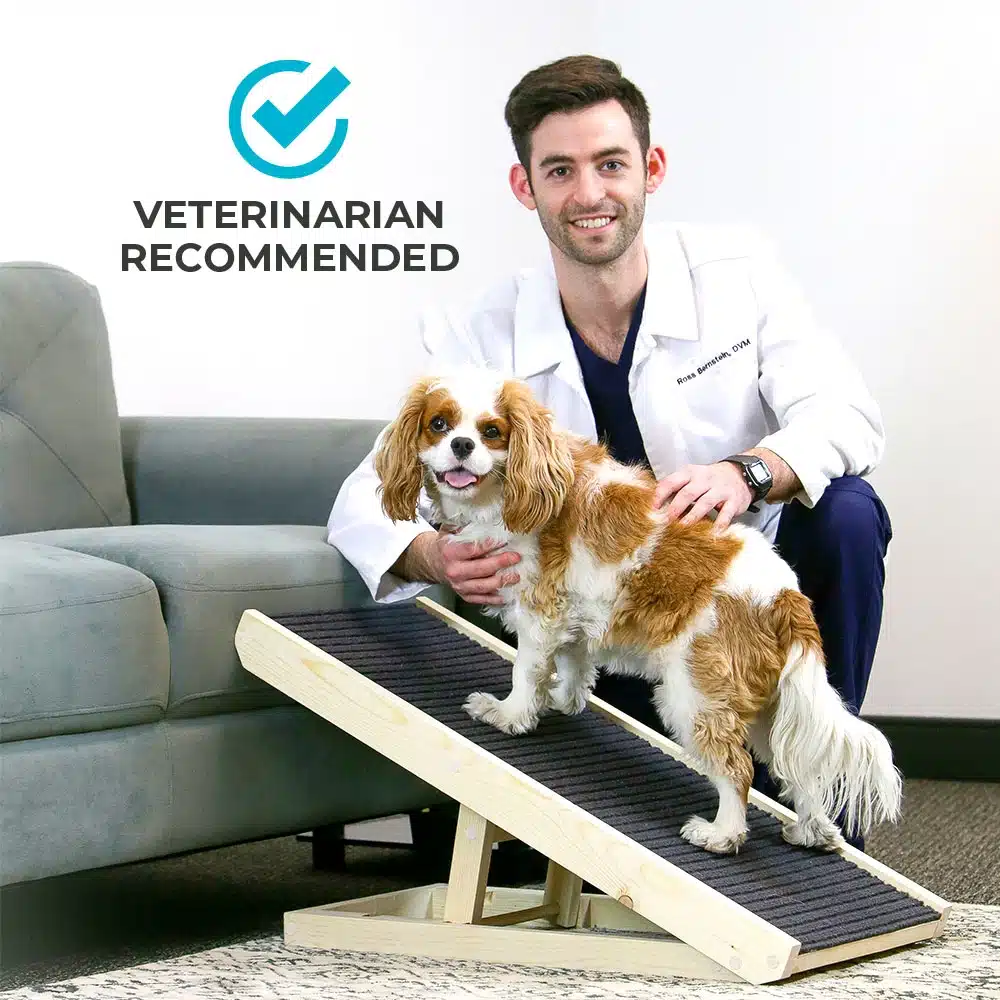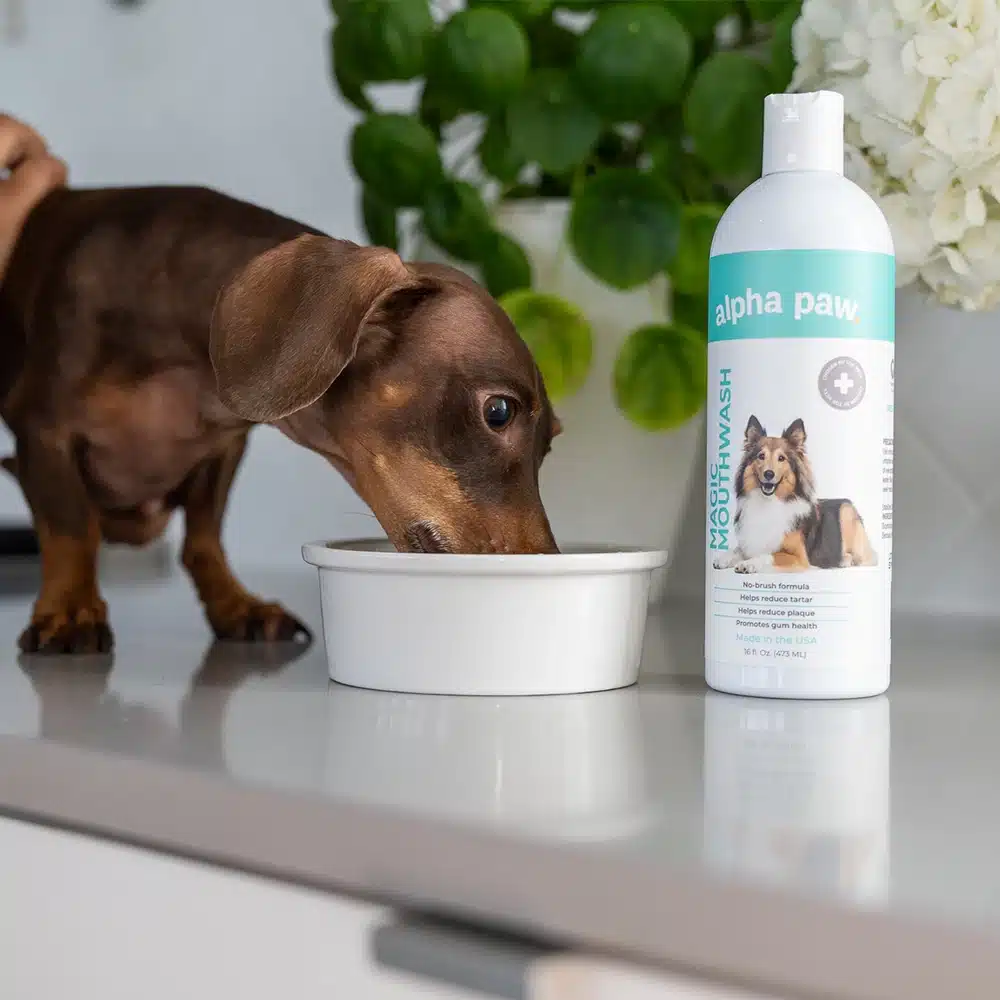Your Dog Can Never Be Truly Healthy If You Don’t Take Care Of His Oral Hygiene.
In fact, a lot of serious canine ailments come from unhealthy mouths. For this reason, it is crucial that you improve your dog’s oral hygiene in the best way possible.
The question now is, “how?”
That’s exactly what we are going to answer today. In this post, let us focus on the three most effective ways to improve your dog’s oral hygiene.
1. Brush Your Dog’s Teeth
Just like us, humans, your dog needs regular brushing. Remember that food residue, bacteria, dead cells, and other foreign materials can easily accumulate in your dog’s mouth. If not removed, these materials can develop into plaque and tartar, which can lead to serious problems in the future.
You can avoid myriads of diseases when you brush your dog’s teeth. Here are a few points to remember:
- Use a specially designed toothbrush for dogs with soft bristles
- If you don’t have a dog toothbrush, using a finger toothbrush, a child’s toothbrush, a clean washcloth, or a cotton swab can serve as alternatives.
- Use specially designed toothpaste. Don’t use toothpaste meant for humans. Don’t use baking soda or salt.
- Let your dog sniff or taste the toothpaste to help him be familiar with the procedure.
- Brush gently every individual tooth.
- Reward your dog after brushing with praise or treats.
2. Use Doggy Mouthwash
You probably heard that brushing alone is not enough and it is true in most cases especially with your dog. Brushing can only do so much. There are places in your dog’s mouth that the brush can’t reach and that’s where doggy mouthwash comes in.
The One Thing Pet Owners Regret Not Doing Until It’s Too Late
Is your pet safe?
1 in 3 pets will need emergency veterinary treatment each year and it is estimated a pet receives emergency care every 2.5 seconds in the U.S.
The average cost of treating a broken bone in dogs is $2,700. Cancer treatments? Up to $10,000.
It’s why so many pet owners say their biggest regret isn’t the vet bill—it’s not having pet insurance when they needed it most.
Ask yourself: “If an unexpected $5,000 vet bill hit tomorrow, could I afford it?”
If the answer is no, it’s time to get covered.
Take a look at Lemonade. They have a great app that actually works, they have an instant chatbot that is faster and, dare we say it, friendlier than most companies’ “real” customer service and a quick scroll through Reddit will uncover… people are really vibing with this brand.
So go check them out and take a look. It takes less than a minute.
So, why should you use a mouthwash for your dog? Here are some benefits to take note of:
- Easy to Use
- Safe
- Uses natural ingredients
- Prevent, reduce, and remove plaque and tartar
- Freshens breath
- Kills bacteria
- Works with or without brushing
- Works on all breeds
Doggy mouthwash is easy to use. Depending on the type of mouthwash you have, you can simply pour the mouthwash to your dog’s water bowl, spray it in his mouth, or directly wipe it to his teeth. Best is to read through the product instruction to know how to use the mouthwash, how often you should use it, and how much you should use in each application.
3. Set Regular Dental Exams
Finally, when taking care of your dog’s oral health, don’t forget your vet. Generally speaking, your dog would need dental exams and cleaning for at least once a year or more depending on your vet’s advice. Dental exams should start when your dog turns six months old.
The best thing about dental exams is that you get to know more about the condition of your dog. With a trained and qualified vet checking your dog’s teeth, you can identify potential problems early on before they become a huge issue. This saves you not just money, but pain and discomfort for your dog.
Moreover, deep dental cleaning is important to your dog’s health. Your vet can remove plaques, tartar, and other stubborn foreign materials that got stuck in your dog’s teeth for a long time.
Healthy Mouth, Healthy Body
Your dog’s mouth plays a vital role in his health. It is where his food and nutrition comes in. Taking care of your dog’s oral cavity allows him to enjoy life longer and better.
So, don’t ignore your dog’s oral hygiene. It is among the most important keys to the wellbeing of your four-legged friend.
80% of Dogs Develop Arthritis or Joint Pain by 7 Years old – Here’s How to Protect Them
Most of us train our dogs when they are puppies to jump up on furniture. We think it’s harmless (and easier than always lifting them), but for dogs, couches and beds are very high compared to the size of their bodies.
Every time they jump it compresses their back and applies enormous force to their joints.
It’s no wonder that an incredible 80% of dogs experience arthritis or joint pain by only 7 years old.
Luckily, there is a vet-recommended solution.
It’s the PawRamp by Alpha Paw. An adjustable ramp that allows dogs to safely get on and off couches and beds. PawRamp makes joining you in bed or on the couch effortless and fun.
As a bonus, you can use code SAVE35 to get $35 off the PawRamp today.









